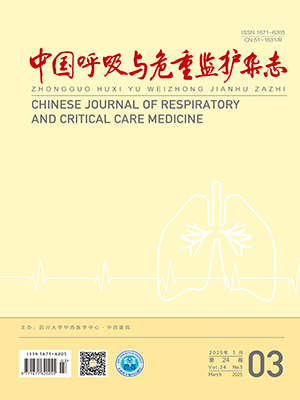Objective To investigate the mechanismof lung injury caused by paraquat poisoning by observing the changes of fibrogenic cytokines in acute paraquat poisoned rats and the effects of pyrrolidine dithiocarbamate ( PDTC) .
Methods Sprague-Dawley rats were randomly divided into three groups, ie. acontrol group ( n =6) , a PDTC group ( n =36) , a paraquat group ( n = 36) , and a paraquat + PDTC group( n =36) . The rats in the PDTC group, the paraquat group, and the paraquat + PDTC group were subdivided into 6 subgroups sacrificed respectively on 1st, 3rd,7th,14th, 28th and 56th day after the treatment. The levels of transforming growth factor-β1( TGF-β1 ) , platelet-derived growth factor ( PDGF) , insulin-like growth
factor-1 ( IGF-1) in serum were measured. Meanwhile the expression of connective tissue growth factor ( CTGF) and hydroxyproline in lung tissues were detected. The relationship of above cytokines with hydroxyproline was analyzed.
Results The destructive phase in early ( 1 ~7 d) was characterized by hemorrhage, alveolar edema, and inflammatory cell infiltration. The proliferous phase in later stage ( 14 ~56 d) was characterized by diffused alveolar collapse with fibroblast proliferation and patchy distribution of collagen fibers. Compared with the control group, the level of TGF-β1 on all time points, the level of PDGF from7th to 56th day, the level of IGF-1 from3rd to 56th day in the paraquat group all significantly increased ( P lt;0. 01) . Immunohistochemistry results showed CTGF positive cells mainly located in aleolar epithelial
cells, endothelial cells,macrophages in early stage, and fibroblasts were main positive cells on the 28th and the 56th day. The expression of CTGF in the paraquat group increased gradually compared with the control group on different time points ( P lt; 0. 05 or P lt; 0. 01) . Meanwhile, the levels of above cytokines were positively correlated with the level of hydroxyproline. Noteworthy, PDTC treatment led to significant decreases of above cytokines compared with the paraquat group in corresponding time points ( P lt;0. 05 or P lt;0. 01) .
Conclusions Over expressions of IGF-1, TGF-β1 , PDGF, IGF-1 and CTGF may play important roles in lung fibrosis of paraquat poisoned rats. PDTC, as a b NF-κB inhibitor, may inhibits NF-κB activity and further significantly decreases expressions of cytokines, leading to significantly attenuated pulmonary inflammation and fibrosis. However, the mechanisms of PDTC intervention still remain to be explored.
Citation: HUANG Min,YANG Huifang,LI Honghui,WANG Lin,LIU Herong.. Changes of Fibrogenic Cytokines in Acute Paraquat Poisoned Rats and Effects of Pyrrolidine Dithiocarbamate. Chinese Journal of Respiratory and Critical Care Medicine, 2012, 11(5): 452-458. doi: Copy
Copyright © the editorial department of Chinese Journal of Respiratory and Critical Care Medicine of West China Medical Publisher. All rights reserved




